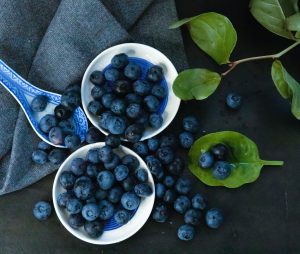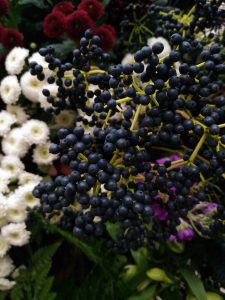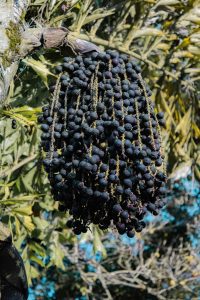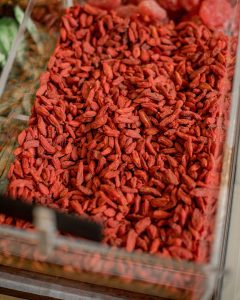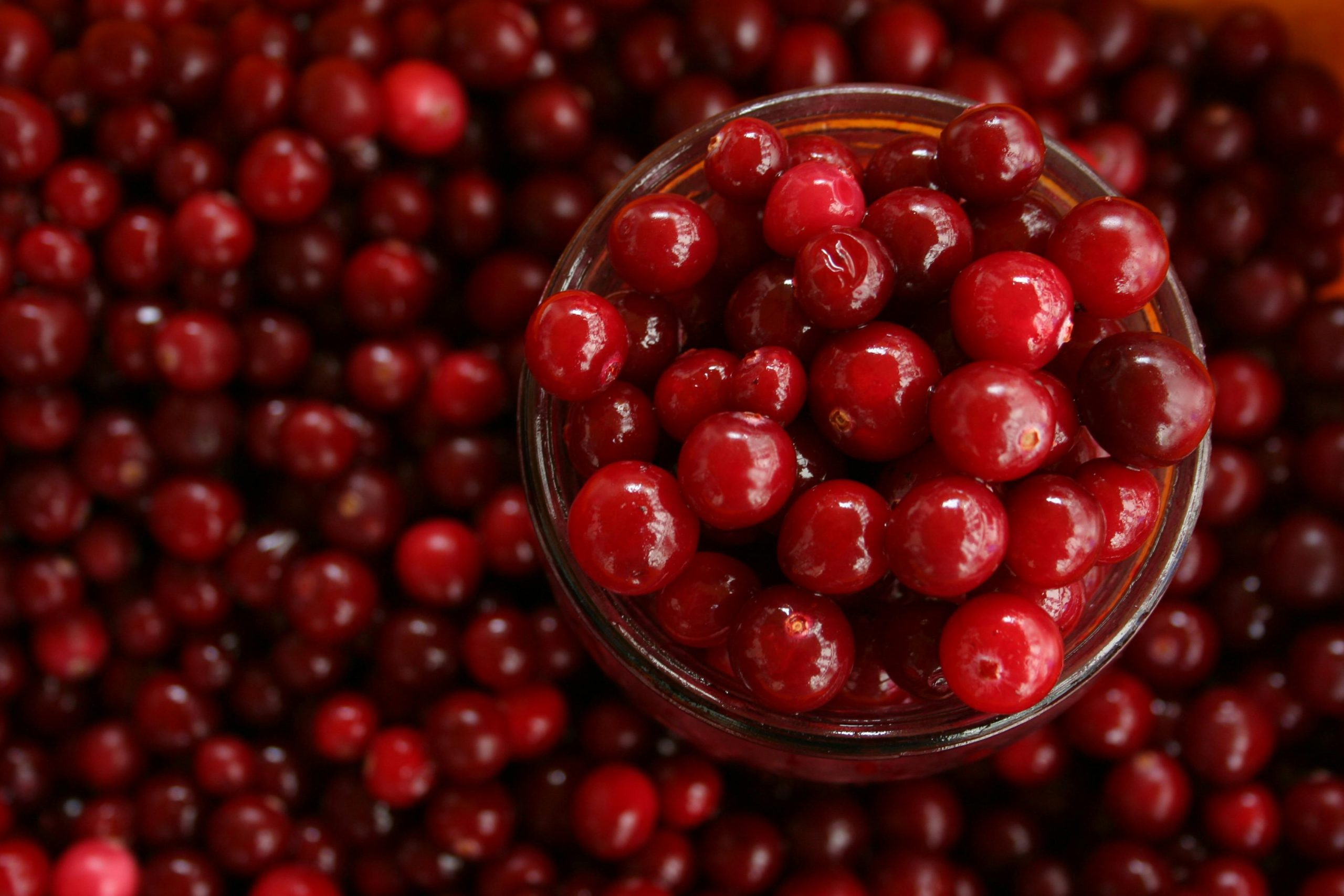
What are Cranberries?
Cranberries, belonging to the genus Vaccinium, are small, round, and brightly colored fruits known for their distinctive tart taste. Native to North America, these berries thrive in acidic, sandy bogs, and are often associated with the holiday season. The two main types are the American cranberry (Vaccinium macrocarpon) and the European cranberry (Vaccinium oxycoccos). Typically, they are harvested in the fall.
Cranberries are celebrated for their rich antioxidant content, particularly anthocyanins and proanthocyanidins, which contribute to their vibrant color and potential health benefits. Commonly consumed as juices, sauces, and dried snacks, cranberries offer versatility in culinary applications. Their tartness is often balanced with sweeteners in various recipes.
Beyond their culinary appeal, cranberries are known for potential health benefits, including urinary tract health and cardiovascular support. The annual tradition of harvesting cranberries involves flooding the fields, making the berries float for easier collection.
Whether enjoyed fresh, dried, or in processed forms, cranberries remain a symbol of festive gatherings and a flavorful addition to both sweet and savory dishes.
Why Do We Eat Cranberries?
People eat cranberries for various reasons, driven by their unique taste, versatility, and potential health benefits. Here are some key reasons why cranberries are commonly consumed:
- Taste:
- Despite their natural tartness, cranberries offer a distinctive and refreshing taste. When sweetened, they become a delicious addition to a wide range of culinary creations.
- Versatility in Culinary Use:
- Cranberries are incredibly versatile and can be enjoyed in various forms. They are used to make juices, sauces, jams, and are added to both sweet and savory dishes, enhancing flavors and providing a unique twist.
- Holiday Tradition:
- Cranberries are often associated with holiday meals, particularly Thanksgiving and Christmas. Cranberry sauce is a traditional accompaniment to festive dinners.
- Rich in Antioxidants:
- Cranberries are rich in antioxidants, particularly anthocyanins and proanthocyanidins, which may contribute to overall health by combating oxidative stress and inflammation in the body.
- Urinary Tract Health:
- Cranberries are renowned for their potential benefits in supporting urinary tract health. They contain compounds that may help prevent certain bacteria from adhering to the urinary tract lining.
- Cardiovascular Support:
- Some studies suggest that the antioxidants in cranberries may have cardiovascular benefits, contributing to heart health by reducing the risk of certain cardiovascular conditions.
- Dried Snacks:
- Dried cranberries, often sweetened, are popular snacks and are commonly used in salads, cereals, and trail mixes.
- Rich Nutritional Profile:
- Cranberries are a good source of vitamin C, fiber, and various essential nutrients, contributing to a well-rounded and nutritious diet.
- Cultural and Culinary Significance:
- Cranberries hold cultural significance in North America and are featured in traditional recipes and celebrations. They have become a symbol of certain festive occasions.
Whether enjoyed in their natural state, as part of a meal, or in processed forms, cranberries are a flavorful and nutrient-rich fruit that has earned a place in both everyday and celebratory cuisines.
When Do We Eat Cranberries?
Cranberries are commonly consumed throughout the year, but there are certain times when they are especially popular:
- Thanksgiving and Christmas:
- In the United States, cranberries are a staple during Thanksgiving and Christmas celebrations. Cranberry sauce is a traditional side dish served with turkey or other holiday meals.
- Fall and Winter Months:
- Cranberries are harvested in the fall, making them more widely available during this season and into winter. Fresh cranberries, cranberry sauces, and juices are often enjoyed during these months.
- Holiday Season:
- Cranberries are associated with the holiday season and are frequently used in festive recipes. They add a burst of color and flavor to various dishes and beverages.
- Year-Round in Processed Forms:
- While fresh cranberries are most abundant in the fall, processed forms such as dried cranberries, cranberry juices, and sauces are available year-round. These products contribute to the continuous consumption of cranberries in various recipes.
- Summer:
- Dried cranberries, often used in salads and snacks, are popular during the summer months. Their sweet and tart flavor complements the season’s lighter dishes.
- Snacking and Culinary Use:
- Cranberries, both fresh and dried, are enjoyed as snacks and incorporated into a variety of culinary creations throughout the year. They add a unique taste to salads, cereals, baked goods, and more.
While fresh cranberries are prominently featured during the fall and holiday season, the availability of processed forms allows people to enjoy the taste and benefits of cranberries at different times throughout the year.
Ingredients of Cranberries
Cranberries, when consumed in their natural form, don’t have a list of ingredients since they are whole, unprocessed fruits. However, if you’re referring to processed cranberry products, such as cranberry juice, cranberry sauce, or dried cranberries, additional ingredients may be included. Here are common ingredients found in various cranberry products:
- Cranberries (for fresh or whole cranberry products):
- The main and natural ingredient is the cranberry itself.
- Sugar:
- Often added to balance the tartness of cranberries, especially in cranberry juice, dried cranberries, and cranberry sauce.
- Water:
- In the case of cranberry juice, water may be added to dilute the concentrated juice.
- High Fructose Corn Syrup (HFCS):
- Some commercially processed cranberry products, like sweetened cranberry juice, may contain high fructose corn syrup as a sweetener.
- Pectin:
- A natural thickening agent used in cranberry sauces and jams.
- Ascorbic Acid (Vitamin C):
- Added to maintain color and act as a preservative in certain cranberry products.
- Other Fruit Juices:
- In some blended juices, other fruit juices may be added to enhance flavor.
It’s important to check the product label for specific ingredients, as they can vary depending on the form of cranberry product and the brand. When choosing cranberry products, opt for those with minimal added sugars and avoid unnecessary additives if you prefer a more natural option.
Types of Cranberries
There are several types and varieties of cranberries, each with its unique characteristics, flavor profiles, and growing conditions. The two main species of cranberries are the American cranberry (Vaccinium macrocarpon) and the European cranberry (Vaccinium oxycoccos). Within these species, there are different varieties and cultivars. Here are some common types:
- Early Black:
- This variety produces medium-sized, dark red to black berries. It is known for its early harvest.
- Stevens:
- Stevens cranberries are a widely cultivated variety known for their large, dark red berries. They are often used for processing into juice and sauce.
- Ben Lear:
- Ben Lear cranberries are known for their vibrant red color and are commonly used for processing into juices and sauces.
- Howes:
- Howes cranberries are a popular variety with large, dark red berries. They are frequently used in processed cranberry products.
- Pilgrim:
- Pilgrim cranberries produce medium-sized, red berries and are often used for both fresh and processed applications.
- McFarlin:
- McFarlin cranberries are known for their dark red color and are used in both fresh and processed forms.
- Bergman:
- Bergman cranberries produce medium-sized, dark red berries and are well-suited for processing.
- Franklin:
- Franklin cranberries are known for their early harvest and are used in various cranberry products.
- Late Howes:
- As the name suggests, this variety is a later-harvested version of the Howes cranberry, extending the harvesting season.
- Searles:
- Searles cranberries produce dark red berries and are commonly used for processing into juice and sauce.
These varieties may vary in taste, size, and suitability for different culinary and processing applications. When selecting cranberries, the specific variety may not always be labeled, but they are generally chosen based on intended use and regional availability.
Signs of Ripe, Signs of Raw and Signs of Rotten Cranberries
Signs of Ripe Cranberries:
- Color:
- Ripe cranberries are typically deep red or dark red in color. Some varieties may also have a reddish-purple hue.
- Firmness:
- Ripe cranberries are firm to the touch. When gently squeezed, they should have a slight bounce and resist excessive pressure.
- Plumpness:
- Ripe cranberries are plump and full, indicating that they have reached their optimal size.
- Glossy Skin:
- Ripe cranberries often have a glossy or shiny appearance, which is a sign of freshness.
- Floatation:
- In the harvesting process, ripe cranberries float, making them easier to separate from the vines.
Signs of Unripe Cranberries:
- Color:
- Unripe cranberries may have a lighter or more subdued color compared to ripe ones.
- Hardness:
- Unripe cranberries will be harder to the touch and lack the plumpness associated with ripe berries.
- Underdeveloped Size:
- Unripe cranberries may be smaller and less rounded than their ripe counterparts.
Signs of Rotten Cranberries:
- Mold:
- Rotten cranberries may develop mold, visible as fuzzy patches or dark spots. Discard cranberries with visible mold.
- Soft or Squishy Texture:
- Rotten cranberries become soft, mushy, or may have a collapsed appearance. If the texture feels off and the berry is no longer firm, it may be spoiled.
- Offensive Odor:
- Rotten cranberries emit a strong, unpleasant odor. If the cranberries smell bad, they are likely spoiled.
- Dark or Discolored Areas:
- Dark spots, bruising, or unusual discoloration are signs of deterioration. Check for these on the surface of the cranberries.
- Leaking Juice:
- Excessive juice or a wet, sticky feel can be a sign of overripeness or spoilage.
When selecting cranberries, look for those that are deep red, firm, and plump. Avoid cranberries with mold, soft texture, or off-putting odors. Proper storage in the refrigerator can help extend the freshness of cranberries.
Summary
Cranberries, small, tart berries native to North America, are renowned for their vibrant red color and distinct taste. Belonging to the Ericaceae family, these berries thrive in acidic, sandy, and marshy environments. Widely cultivated for their culinary and health benefits, cranberries are rich in antioxidants, particularly vitamin C, and have been linked to urinary tract health. Often consumed as juice, dried fruit, or incorporated into sauces and desserts, they add a tangy flavor to various dishes. Beyond their culinary uses, cranberries have gained popularity for their potential role in preventing urinary tract infections due to compounds that hinder bacteria adhesion. With a versatile profile, cranberries continue to be a staple in both traditional and contemporary cuisine, contributing not only to flavor but also to potential health benefits.


